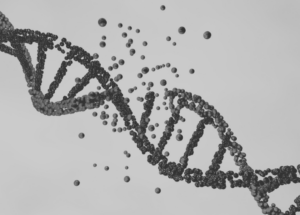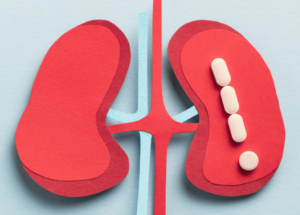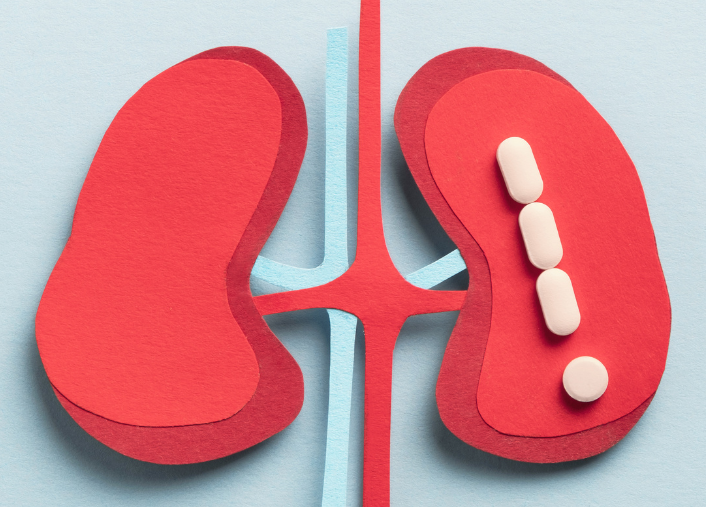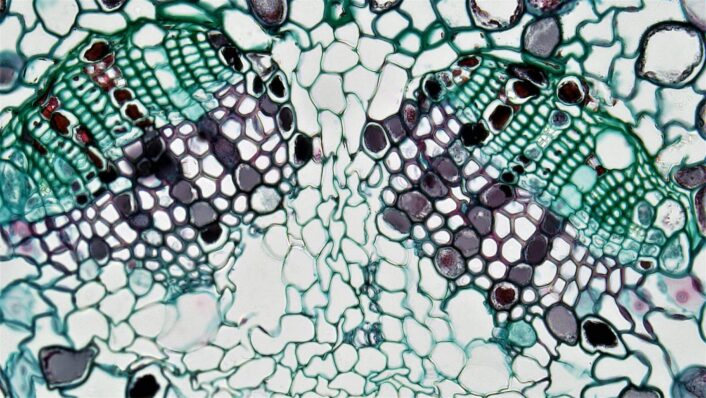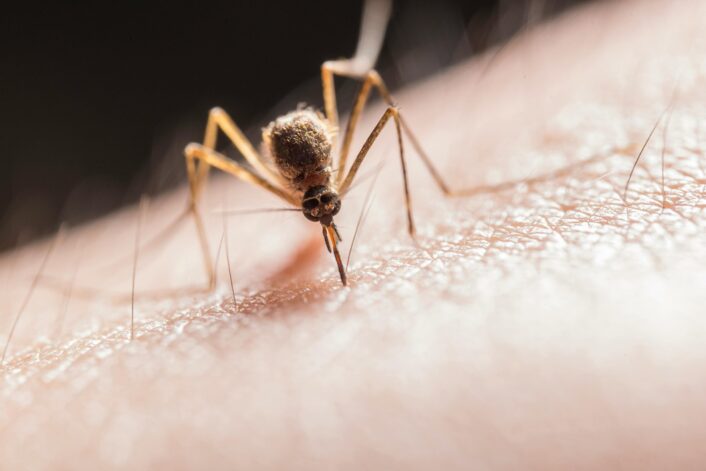Everything You Need To Know About Genetic Testing
Aira
on
August 16, 2024
What is Genetic Testing?
Genetic testing involves analyzing an individual’s DNA to identify specific genetic mutations, polymorphisms, or chromosomal changes. This information can be used for various purposes, including diagnosing medical conditions, assessing disease risk factors, informing treatment plans, and optimizing your lifestyle and wellness.
There are two main types of genetic testing:
- Direct-To-Consumer (DTC) Genetic Testing
- Clinical Genetic Testing
Both types of genetic testing contribute to the growing field of personalized medicine, helping individuals make more informed decisions about their health and lifestyle.
What Is DTC Genetic Testing?
DTC stands for “Direct-to-Consumer,” and in the context of genetic testing, it refers to genetic tests marketed directly to consumers via television, print advertisements, or the Internet. As compared to traditional genetic testing, which is usually conducted in a medical setting and often requires a healthcare provider’s referral. DTC genetic testing kits can be purchased online or in stores. Customers can collect their DNA samples, usually via a saliva or buccal swab, and then send these samples back to a lab for analysis.
Key Features of DTC Genetic Testing:
- Accessibility: One of the biggest benefits is the ease of access for the general public. You don’t need a doctor’s prescription to order a DTC genetic test.
- Convenience: The test kit is delivered to your doorstep, and the DNA sample can be collected in your home.
- Range of Tests: Various genetic tests are available, from those focusing on ancestry and genealogy to health risk assessments for diseases like Alzheimer’s or certain cancers.
- Privacy: DTC tests offer privacy since you can take the test without involving a healthcare provider. However, there are concerns about your genetic data’s security and future use.
- Speed: Once the lab receives your sample, the results are usually available online within 3-5 weeks, making it a quick way to obtain your personal genetic information.
DTC Genetic Reports Offered By LifeDNA
Skincare Report
The LifeDNA skincare report takes a deep dive into your genetic makeup to understand skin-related characteristics such as hydration level, collagen quality, and sensitivity to environmental factors like UV rays. Utilizing your DNA data, the report offers personalized skincare ingredient suggestions and lifestyle advice to help you maintain your glowing skin.
Example Trait: Skin Tanning vs. Sun Burning
This genetic trait informs how your skin responds to sun exposure—whether you tan easily or are prone to sunburn. Based on this trait, the report will offer personalized advice on skin care routines, product recommendations, and lifestyle changes. For instance, if you are genetically prone to tanning quickly, the report might suggest a higher SPF sunscreen and additional protective measures like wearing hats and long sleeves.
Vitamins & Supplements Report
Navigating the world of dietary supplements can be confusing, but at LifeDNA, we aim to simplify it with our Supplement Report. Using your genetic data, the report identifies which vitamins, minerals, and other supplements could be most beneficial for you. The trait reports are tailored to guide your unique nutritional needs, from optimizing mental clarity to immune system support.
Example Trait: Vitamin D Levels
Based on genetic markers linked to Vitamin D levels, the Supplement Report might suggest specific Vitamin D supplement dosage if you’re likely to have lower levels due to poor absorption and other cellular mechanisms. This is particularly useful for bone support and immune function.
Nutrition Report
The Nutrition Report from LifeDNA offers genetically tailored nutrition insights that can help optimize your wellness. The report delves into your unique genetic predispositions to provide dietary recommendations from macro to micronutrients. Do you have a higher genetic likelihood for lactose intolerance or gluten sensitivity, or does your DNA affect how well your body metabolizes caffeine?
Example Trait: Caffeine Metabolism and Sensitivity
The trait can identify your genetic predisposition towards caffeine sensitivity and recommend appropriate intake levels. If you’re genetically sensitive to caffeine, the Nutrition Report would suggest limited consumption and provide alternative energy-boosting foods and nutrients.
Personality & Cognition Report
The LifeDNA Personality Report offers intriguing insights into how your genetics might influence your behavior, emotions, and social interactions. Based on genetic markers associated with personality traits such as introversion, extroversion, and emotional resilience, the report provides a detailed analysis to help you understand yourself better. Knowing your genetic predispositions can guide personal development, optimize relationships, and aid in career satisfaction.
Example Trait: Risk-Taking
Using genetic markers, the Personality & Cognition Report might indicate a predisposition for risk-taking behavior. Understanding this trait could provide context for confident life choices and help you balance your tendencies with well-informed decisions.
Wellness Report
The Wellness Report from LifeDNA takes a holistic approach to well-being. It covers various aspects like stress response and the potential for substance abuse. Using your genetic data, the report offers comprehensive lifestyle advice, including mindfulness techniques and other wellness strategies tailored to your genetic makeup. The aim is to optimize your overall quality of life through actionable, genetically-informed insights.
Example Trait: Potential for Insomnia
Your genes can influence how well you sleep. If the report identifies your genetic propensity for insomnia based on your genetic makeup, it might suggest various relaxation techniques or supplements like melatonin to help optimize your sleep quality.
Fitness Report
Fitness isn’t one-size-fits-all, and LifeDNA’s Fitness Report acknowledges that by providing a customized workout plan based on your genes. The report considers factors like muscle fiber composition, metabolism, and propensity for injury. You get exercise optimizations that are genetically aligned with your body’s capabilities, helping you to achieve your fitness goals more effectively. Whether you want to build muscle, optimize endurance, or just stay active, this report gives you the genetic insights to do it right.
Example Trait: Post-Exercise Recovery Rate
Your rate of muscle recovery post-exercise can be genetically influenced. If you have a slower-than-average recovery rate, you will also find suggestions like specific rest periods and types of exercise that can help you optimize your fitness regimen.
Does LifeDNA Provide At-Home Genetic Testing Kits?
LifeDNA provides at-home genetic testing kits designed for personalized wellness insights. The test is non-invasive, simple to complete, and can be conducted in the privacy of your home. After purchasing, you’ll receive a kit with cheek swab instructions within approximately three to seven days.
Once you’ve collected your sample, it generally takes about five days to arrive at LifeDNA’s laboratory. The analysis process typically requires a two-week waiting period. After the reports are ready, you’ll receive a notification at the email address you provided during the subscription process, and your personalized report will be available for review.
Why Is LifeDNA The Best DTC Genetic Testing Company?
LifeDNA has emerged as a prominent option for analyzing 23andMe raw data, owing to a combination of unique offerings and a commitment to personalized wellness. Here’s why many regard LifeDNA as the best option for making the most of your 23andMe raw data:
- Holistic Approach to Wellness: Unlike many other platforms that focus strictly on health-related risks or ancestry, LifeDNA adopts a holistic approach. They analyze genetic data to offer personalized optimizations for nutrition (including a personalized grocery list!), skin care, vitamins & supplements, wellness, personality & cognition, and fitness. This range lets users get a complete picture of their wellness needs based on their DNA.
- Product Recommendations: LifeDNA goes beyond just providing insights. They offer specific product recommendations, skincare ingredients, or supplements tailored to an individual’s genetic profile. This makes their service actionable, allowing users to make immediate changes based on their results.
- Data Security: LifeDNA places a high emphasis on protecting user data. Their commitment to privacy ensures that users can trust the platform with their sensitive genetic information.
- User-Friendly Reports: LifeDNA reports are easy to interpret. They are designed to be accessible to the layperson without compromising on the depth and accuracy of the information.
- Continual Updates: As genetic research evolves, so does LifeDNA’s platform. Users can expect their reports and insights to be updated with the latest scientific findings.
- Dedicated Research and Development: LifeDNA invests in research to continually refine its algorithms, ensuring the insights provided are based on cutting-edge science.
- Educational Resources: LifeDNA also provides ample resources for users to understand their genetic makeup better. This education-first approach demystifies the complex world of genetics, making it approachable and actionable for everyone.
- Scientific rigor: LifeDNA partners with CLIA-certified, CAP-accredited, and HIPAA-compliant laboratories, creating an unmatched commitment to scientific rigor.
Further, if you have not done a DNA test before, LifeDNA provides that, too. Start your personalized wellness journey with LifeDNA’s state-of-the-art DNA kits here.
What Is Clinical Genetic Testing?
Clinical genetic testing involves the laboratory analysis of DNA to identify genetic mutations or variations associated with disease or medical conditions. Unlike DTC genetic tests, clinical genetic tests are typically ordered by a healthcare provider and are used for diagnosing, treating, or assessing the risk of medical conditions. These tests are part of a broader medical evaluation. They are often accompanied by pre-and post-test counseling to help patients understand the implications of the test results for their health.
What Diseases Can Be Detected Through Genetic Testing?
Genetic testing has revolutionized medicine and our understanding of human health. Examining an individual’s DNA makes it possible to identify diseases and conditions with a genetic component. Here are some types of diseases and conditions that can currently be detected through various forms of genetic testing:
Inherited Diseases
Genetic testing can detect inherited disorders like cystic fibrosis, Tay-Sachs disease, and sickle cell anemia. This process is known as carrier screening. These tests can benefit potential parents who want to know if they are carriers for certain conditions that could be passed on to their children.
Cancer Risk
Genetic mutations that increase the risk of developing certain cancers, such as BRCA1 and BRCA2 mutations for breast cancer, can also be identified. This can help cancer specialists make decisions regarding preemptive measures, like increased monitoring or preventative surgeries.
Cardiovascular Diseases
Certain genes are linked to an increased risk of heart disease and other cardiovascular issues. Genetic tests can flag these genes, allowing for early intervention and management strategies.
Neurological Disorders
Genetic testing can identify risk factors for neurological disorders such as Alzheimer’s disease, Huntington’s disease, and Parkinson’s disease. However, the presence of these genes doesn’t mean that the person will develop the condition, only that the risk is higher.
Metabolic Disorders
Conditions like phenylketonuria (PKU) and galactosemia, which affect how the body processes certain nutrients, can be diagnosed shortly after birth using genetic testing. According to a systematic review published in July this year, 52% of patients diagnosed with metabolic disorders also had a family member with the same condition.
Prenatal and Newborn Screening
Prenatal genetic tests can screen for conditions like Down syndrome and other chromosomal abnormalities. After birth, newborn screening can identify various conditions, including metabolic disorders and congenital hearing loss, allowing prompt treatment. Diagnostic tests like chorionic villus sampling (CVS) and amniocentesis can establish with over 99.9% certainty whether a fetus has a chromosomal variation.
Autoimmune Diseases
While not definitive, genetic testing can sometimes assess the risk for autoimmune conditions, helping doctors to piece together a more comprehensive picture of your health risks. For example, celiac disease is a condition where the immune system reacts to a substance called gluten that is found in wheat. This affects the digestive system of gluten sensitive individuals if they consume foods like bread and pasta. The likelihood of developing this disease is closely linked to certain genetic markers, specifically HLA DQ2 and DQ8, which are found in more than 98% of individuals with the condition.
Pharmacogenomics
Though not a disease, genetic testing can also provide insights into how your body can respond to certain medications, allowing for more personalized treatment plans. A 2020 review highlighted that genetic factors account for about 95% of the variations in response to drug treatment.
Your Genetics Is Not Your Destiny
It is important to note that while genetic testing can provide valuable insights into your health, your genetics often is just one piece of the puzzle. Lifestyle, environmental factors, and other variables can also significantly impact your risk of developing many conditions. Always consult with a healthcare provider for a comprehensive diagnosis and treatment plan.
What Is Whole Genome Sequencing?
Whole genome sequencing is a comprehensive method for analyzing your entire genetic makeup. The technique involves determining the complete DNA sequence at a single time., by sequencing both the chromosomal DNA and the DNA contained in the mitochondria.
By reading the entire sequence of an individual’s DNA, whole genome sequencing can provide detailed information about many aspects of being a human, including inherited traits, susceptibility to certain diseases, and even ancestral history. This data can benefit diagnostic purposes, personalized medicine, and academic research.
We will cover whole genome sequencing in more depth in a future article.
How Long Does Genetic Testing Take?
The duration of the genetic testing process can vary depending on the type of test and where it’s being conducted.
DTC Genetic Testing
- Kit Arrival: A DNA kit takes approximately 3 to 7 days to be delivered to your specified address.
- LifeDNA time: 2-3 days
- Sample to Lab: It takes around five days to reach the lab once you return your sample.
- LifeDNA time: 3-5 days
- Analysis Period: Two weeks for your DNA sample to be analyzed in the lab by most companies.
- LifeDNA time: 10 business days maximum
- Report Generation: After analysis, your personalized report is generated and sent to you via email.
- 30 minutes to 1 hour
Clinical Genetic Testing
- Sample Collection to Test Start: In a clinical setting, the sample (usually blood, saliva, or buccal cells) is collected and then sent to a specialized laboratory. This initial step could take from a day to a week.
- Analysis Time: Once the lab receives the sample, it usually takes 1 to 4 weeks to complete the analysis, depending on the complexity of the test.
How Much Does A DTC DNA Test Cost?
DNA testing can cost anywhere from $30 to $350, depending on the report’s details. Most DNA testing companies offer varying plans that cater to people’s budgets. Like other subscriptions, the more you pay, the more access and premiums you receive.
LifeDNA offers a DNA test plan for as low as $199, which offers access to 6 personalized wellness reports with over 164 unique traits.
Is Genetic Testing Covered By Insurance?
In the United States, the coverage of genetic testing by insurance varies widely and is generally influenced by the type of test and its medical necessity. Tests ordered by healthcare providers for specific medical conditions or to guide treatment decisions are more likely to be covered by insurance. These could include tests for cancer risk, prenatal tests, and tests to diagnose specific genetic conditions.
However, insurance typically does not cover elective tests, such as those for ancestry or general wellness offered through direct-to-consumer (DTC) platforms.
If you’re considering undergoing genetic testing, you must check with your insurance provider to understand what is and isn’t covered. Some insurance providers may require pre-authorization or a letter of medical necessity from a healthcare provider to cover the cost of the test. Here is an enlightening article for further reading on genetic discrimination and how health insurance for genetic testing works.
Summary
- Genetic testing involves analyzing an individual’s DNA to identify specific genetic mutations, polymorphisms, or chromosomal changes.
- There are two main types of genetic testing: direct-to-consumer (DTC) genetic testing and clinical genetic testing.
- LifeDNA offers 120+ DTC genetic trait results included in six personalized wellness reports.
- Clinical genetic testing involves the analysis of DNA to identify variations associated with disease or medical conditions.
References
- https://www.ncbi.nlm.nih.gov/pmc/articles/PMC5940788/
- https://www.ncbi.nlm.nih.gov/pmc/articles/PMC8928870/
- https://pubmed.ncbi.nlm.nih.gov/30257492/
- https://rdcu.be/dkvcR
- https://www.ncbi.nlm.nih.gov/pmc/articles/PMC4762266/
- https://www.ncbi.nlm.nih.gov/pmc/articles/PMC4983298/
- https://www.nhlbi.nih.gov/health/cystic-fibrosis/diagnosis#
- https://pubmed.ncbi.nlm.nih.gov/12108829/
- https://www.nhlbi.nih.gov/health/sickle-cell-disease/diagnosis
- https://medlineplus.gov/lab-tests/brca-test/#
- https://pubmed.ncbi.nlm.nih.gov/31813745/
- https://www.ncbi.nlm.nih.gov/pmc/articles/PMC9350807/
- https://pubmed.ncbi.nlm.nih.gov/37560457/
- https://www.ncbi.nlm.nih.gov/books/NBK115544/
- https://www.ncbi.nlm.nih.gov/pmc/articles/PMC4737358/
- https://www.ncbi.nlm.nih.gov/pmc/articles/PMC7255432/
- https://medlineplus.gov/genetics/understanding/testing/sequencing/
*Understanding your genetics can offer valuable insights into your well-being, but it is not deterministic. Your traits can be influenced by the complex interplay involving nature, lifestyle, family history, and others.
Our reports have not been evaluated by the Food and Drug Administration. The contents on our website and our reports are for informational purposes only, and are not intended to diagnose any medical condition, replace the advice of a healthcare professional, or provide any medical advice, diagnosis, or treatment. Consult with a healthcare professional before making any major lifestyle changes or if you have any other concerns about your results. The testimonials featured may have used more than one LifeDNA or LifeDNA vendors’ product or reports.


